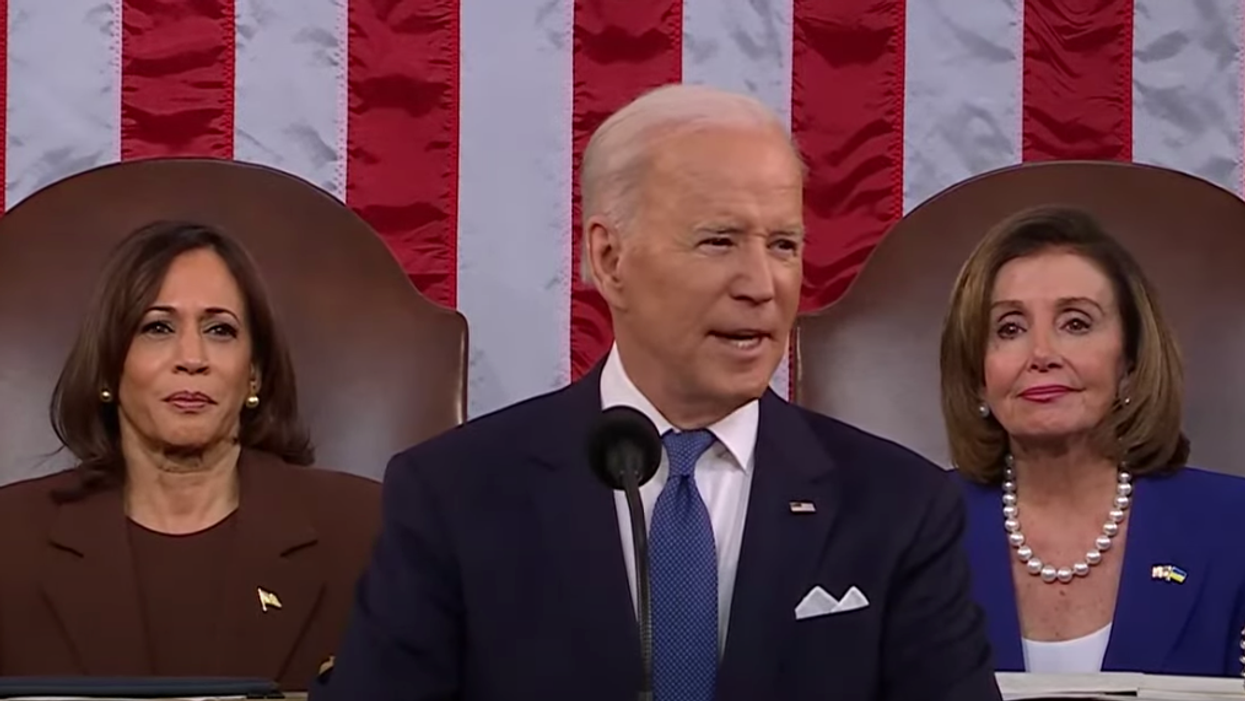
POTUS skirts tackling climate change in SOTU address
Common Dreams
"In this moment of climate emergency," five scientists began a new open letter to U.S. President Joe Biden, "we write with utmost urgency to advise you and your administration to halt recent moves towards increasing fossil fuel production and instead take bold action to rapidly reduce fossil fuel extraction and infrastructure."
Biologist Sandra Steingraber—who is leading the effort with Peter Kalmus, Robert Howarth, Michael Mann, and Mark Jacobson in conjunction with Food & Water Watch—shared a link to the letter on Twitter Wednesday and urged fellow scientists to add their signatures.
"We say the White House call for more drilling and fracking is a climate calamity," Steingraber said. "Sign with us!"
The letter—which its initiators plan to present to the president next month after collecting "a critical mass" of signatures—follows a similar message from October and comes as Biden works to ramp up U.S. gas shipments to Europe in response to Russian President Vladimir Putin's war on Ukraine.
Kalmus, who also shared the document Wednesday, tweeted that "the president's fossil fuel expansion takes us deeper into climate catastrophe."
The scientists' effort aligns with recent remarks from climate campaigners and other experts, who have argued since the war began last month that European nations' attempts to reduce their reliance on Russian fossil fuels—a key source of revenue for Putin's government—show the importance of a swift global shift to clean energy.
"Energy Secretary Jennifer Granholm recently said 'we are on war footing' in calling for increased oil and gas production," the scientists' letter states, referencing the U.S. official's speech at a Houston conference earlier this month. "This is backwards thinking. Instead of fossil fuels, we must apply that level of urgency to building a renewable energy economy."
"Rather than working to increase oil and gas production," the letter adds, "we urge you to use your executive authority to redirect these massive investments, mobilize the country, and rally the global community around a program of energy security through a rapid transition from fossil fuels to renewable energy."
Recalling that when Biden ran for president, he pledged to listen to science, the five experts wrote that "as scientists who look at data every day, we implore you to keep this promise and listen to what the scientific community is saying about fossil fuels and the climate crisis."
They specifically pointed to the Intergovernmental Panel on Climate Change (IPCC) report released last month, which features "a series of dire warnings about the unfolding climate catastrophe," including that "the scientific evidence is overwhelming that we must act now—we simply do not have time to waste."
"Already millions of Americans and even more across the world are being impacted by extreme weather, drought, flooding, sea level rise, and wildfires," the letter notes. "The IPCC report highlights millions being impacted by climate change-induced food insecurity and water scarcity."
The letter warns that "these problems will only accelerate as we continue our reliance on fossil fuels. And, this is on top of the significant health and environmental justice impacts that power plants, export facilities, and other fossil fuel infrastructure have on neighboring communities."
"The United States, Europe, and the rest of the world desperately need energy independence," the document declares, "but allowing more drilling and fracking, approving more pipelines, and expanding export facilities not only fail to address short-term energy needs, they lock us into decades of reliance on fossil fuels and ensure runaway climate chaos for the long run."


/https://static.texastribune.org/media/files/bed8923eb93ace3e205b033e1236472e/Cherice%20McKinney%20Renter%20AM%20TT%2004.jpg)
/https://static.texastribune.org/media/files/de14ffeb4c51f5ad65530cbd78a8267e/Cherice%20McKinney%20Renter%20AM%20TT%2011.jpg)
/https://static.texastribune.org/media/files/ab78e05183b724d26820bb96e484983a/Rent%20Relief%20-%20Stephanie%20Gates%20TT%2002.jpg)





